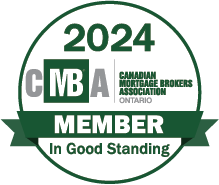Can Fixed Mortgage Rates Go Lower?
Or Have They Bottomed?

With the Bank of Canada in a rate-cutting cycle, many Canadians expect mortgage rates to continue to drop. This may be true for variable mortgage rates since they track changes in the Bank of Canada rate. However, fixed mortgage rates don’t directly follow the Bank of Canada’s overnight rate. Instead, they are tied to the bond market, which has shown mixed signals recently.
Let’s break down how fixed rates are determined, where they stand historically, and why we might be near the bottom for fixed mortgage rates.
How Are Fixed Mortgage Rates Priced?
Unlike variable rates, which move in lockstep with the Bank of Canada’s rate decisions, fixed mortgage rates are driven by government bond yields, particularly the 5-year yield. Bond yields reflect investor expectations about the economy, inflation, and future interest rates. When bond yields rise, fixed mortgage rates tend to follow suit, and when they fall, fixed mortgage rates usually decline.
Pricing in the bond market reflects market views and expectations for the future. In this sense, the bond market is ‘forward looking’. The future expectations that are priced into current bond yields currently include the expectation of future Bank of Canada rate cuts. When the Bank of Canada cuts rates as expected, the bond market will only have a muted reaction because that expected rate cut is already ‘price-in’.
For example, consider the 0.50% rate cut on October 23, 2024. This was a larger than usual cut (0.25% is more common). What did the bond market do that week?
| Oct 21, 2024 | Oct 22, 2024 | Oct 23, 2024 | Oct 24, 2024 | Oct 25, 2024 | |
|---|---|---|---|---|---|
| 5-Yr Bond Yield | 2.98% | 2.97% | 2.99% | 2.99% | 3.01% |
The bond market barely moved and remained relatively flat throughout the week. In response to that rate cut, variable mortgage rates dropped 0.50% and fixed mortgage rates remained unchanged. This example demonstrates how further Bank of Canada rate cuts may not affect fixed mortgage rates at all.
Recent Bond Market Trend
Bond yields have been trending slightly higher in recent weeks. Since the last rate cut in October, Canadian 5-year bond yields have risen and are now 3.17%, as of November 25. One reason for the increase is concerns about inflation. Canada’s most recent inflation data was not good, surprising the market to the high side. When inflation increases, bond yields tend to increase. The market expects another rate cut from the Bank of Canada on Dec 11, but that should not have a material impact on bond yields.
What Influences Bond Market Prices?
Bond market pricing reflects several factors, including:
- Inflation concerns - core inflation remains above 2% and the recent increase has raised concerns going forward.
- US Federal Reserve statements - the US Fed has stated they are not in a hurry to cut rates. Economic activity in the US is healthier than in Canada so they may not need rate cuts to stimulate their economy.
- Economic resilience - strong job reports and GDP growth in Canada and the U.S. have prompted bondholders to demand higher yields
- Geopolitical uncertainty - escalating tensions in other parts of the world, especially concerning Russia, put upward pressure on bond yields.
- Government debt - continuing profligate government spending leads to increasing amounts of government debt financing. This increasing supply of government debt needs higher yields to fund if demand for the debt doesn’t match the growth in supply.
Today's Fixed Rates Match Historical Norms
To understand today’s rates, it’s helpful to look back. Fixed mortgage rates prior to the financial crisis in 2009 were regularly above 4% and often higher than 6%. At the time, this was considered normal. The financial crisis led to central banks cutting rates to lower than normal levels and also saw them purchasing increasing amounts of bonds to drive down bond yields.
While this was considered to be short-term emergency activity, it has persisted. During the pandemic, rates hit historic lows due to unprecedented monetary stimulus and a demand shock. The interest rate environment during Covid does not have a historical precedent.
If we are now in a more normalized economic environment, then today’s mortgage rates are within the historical range considered normal and sustainable. We have an entire generation of borrowers who have never experienced a truly high-interest rate environment like we had in the past. But it is important to understand that the Covid low-rate environment was an anomaly. We should not expect low rates like that again.
Fixed Mortgage Rates May Not Drop Further
There are two key things for mortgage borrowers to understand when setting expectations for the future of fixed mortgage rates:
- As explained above, fixed mortgage rates do not change with every Bank of Canada interest rate decision;
- Several factors currently indicate that fixed mortgage rates may be at or near their bottom:
- Bond yields have held steady recently and even began to increase.
- The economy seems to be normalizing, with inflation no longer at crisis levels, and steady economic growth. The super low rates of the Covid era are not expected in this kind of environment.
- Fixed mortgage rates are currently in the range of normal historical expectations.
- Economic forecasts are muted. The factors that would place downward pressure on bond yields are not currently present in economic forecasts.
Fixed Rate Mortgage Advice
Fixed-rate mortgages are generally preferred by risk-averse Canadian borrowers. Exposure to interest rate risk does not make sense for most mortgage borrowers, especially when borrowing on your primary residence.
If you prefer a fixed-rate mortgage and are waiting for rates to drop you may be disappointed. Bond yields have risen recently, and fixed mortgage rates may move slightly higher in the near term as well. Our expectation is that fixed mortgage rates will move around within a range over the next few months, absent a material economic or geopolitical surprise.
Trying to time the lowest fixed mortgage rate is nearly impossible. You are better to simply look at the rates available today and lock in a rate if it works for you and is affordable.
If you are shopping for a mortgage, consider securing a rate hold-now to protect yourself against potential increases. A rate hold does not commit you to anything. Rate-holds are good for up to 120 days, providing you protection against rising rates while you shop for a home. They are a smart choice. If rates drop during the 120 day rate-hold period, you are not stuck with the rate on the rate-hold – you will get the lower rates available when you are ready to transact.
Conclusion
Anticipating more rate cuts is reasonable but understanding how fixed mortgage rates are set can help you make a smart decision with your mortgage. Fixed mortgage rates have dropped by close to 1.5% in the past year. You can benefit from this normalized rate environment by locking in a fixed mortgage rate now.
We do not anticipate fixed mortgage rates declining much further. The lowest insured, fixed mortgage rate in Ontario right now is 4.09%. Our best guess is that fixed mortgage rates will range from the high 3% range to the mid 4% range in the first half of 2025. The bottom line is that fixed mortgage rates are likely near their floor. Waiting for significant drops could leave you disappointed in a market where bond yields appear to be resisting any further decline.
For help with your mortgage decision, talk to an expert. A lot goes into your mortgage decision and an experienced mortgage broker can help you navigate today’s market dynamics.
For more insights and personalized advice, connect with Frank Mortgage! We can be found at www.frankmortgage.com or 1-888-850-1337.
About The Author

Don Scott
Don Scott is the founder of a challenger mortgage brokerage that is focused on improving access to mortgages. We can eliminate traditional biases and market restrictions through the use of technology to deliver a mortgage experience focused on the customer. Frankly, getting a mortgage doesn't have to be stressful.
Related Posts






